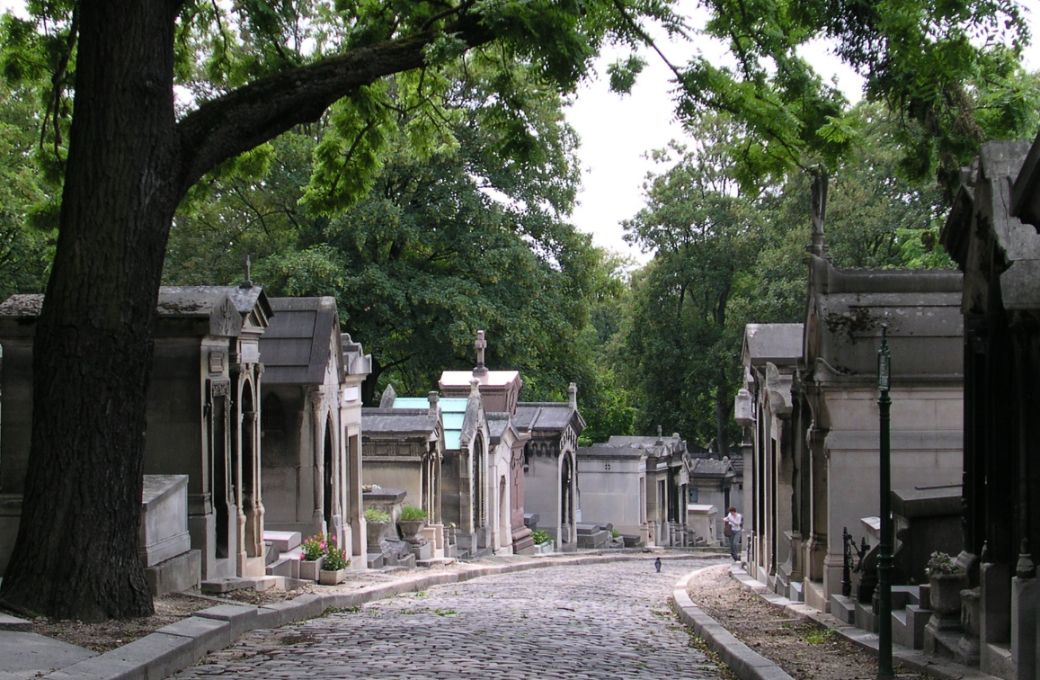This article was updated in June 2025
Hanging around in graveyards isn’t just the reserve of goths: classical fans enjoy the occasional sojourn amongst the silent majority too, especially when it gives us the chance to venerate our dearly departed musical idols at their final resting places. Here are ten sites that all morbid devotees of music should visit before they, well, die.
1Vienna Central Cemetery, Austria
To start off, the big daddy of them all. The list of famous composers interred in the largest of Vienna’s 50-plus cemeteries reads like a roll call of some of the most influential figures in music from the Classical era up to the 20th century: the remains of Gluck, Antonio Salieri, Schubert, Beethoven, the Strauss dynasty (Johann I and II, plus Josef and Eduard), Ligeti and Schoenberg all ended up in this huge necropolis, which opened in 1874, either being laid to rest there initially or moved there from another site. It’s also a popular destination for musicians outside the classical realm: Edgar Froese of Tangerine Dream and Weather Report’s Joe Zawinul are also buried here.

2Père Lachaise Cemetery, Paris, France
Scientific studies of Paris’ Père Lachaise cemetery have found that the area is incredibly rich in the elusive substance known as “cool”. Jim Morrison, Proust, Edith Piaf and Oscar Wilde all set up shop here when they shuffled off this mortal coil, and it’s a popular spot for composers, too: Ignaz Pleyel, Cherubini, Chopin (minus his heart, which rests in Warsaw), Bizet, Ernest Chausson, Enescu and Poulenc are just some of the classical musicians buried here (even Rossini was buried here after his death in 1868, but he was relocated to the Santa Croce Basilica in Florence almost two decades later). It wasn’t always such prime real estate for the dead: after setting it up in 1804, the cemetery’s managers struggled to drum up enthusiasm for the spot. It took a PR stunt involving the reinterment of the remains of Molière and Jean de La Fontaine in the cemetery to convince the public that Père Lachaise was the only place to be seen dead in.
3Tikhvin Cemetery, St Petersburg, Russia
If you’re a music fan of Russophile bent, then there really is no greater place of moribund pilgrimage than the Tikhvin Cemetery, part of the Alexander Nevsky Monastery in St Petersburg. In life, the “Mighty Handful” together forged a distinctly Russian style of music; in death, all of them – Mussorgsky, Cui, Rimsky-Korsakov, Balakirev and Borodin – rest together in this cemetery. Tchaikovsky, Anton Rubinstein, Glinka and Glazunov can also be found here, alongside Dostoevsky and Stravinsky’s father, the opera singer Fyodor Stravinsky.
4St Marx Cemetery, Vienna, Austria
Believe it or not, it isn’t conclusively known where the remains of Mozart – arguably the most famous composer ever to have lived – actually lie. In late 18th-century Vienna, it was common practice to bury those who could not afford a private funeral in an unmarked plot, which could then be reused. This is what happened to Mozart when he died in 1791, and it wasn’t until years later that his wife, Constanze, returned to the St Marx Cemetery to try to ascertain where her husband had been buried. All she had to go on were the memories of the cemetery staff, but a memorial stone was eventually placed on the spot they decided on in 1859. The stone was eventually moved to the Vienna Central Cemetery to mark the centenary of Mozart’s death, and a different stone memorial was placed over the St Marx “grave”. As for the composer’s physical remains, the Mozarteum Foundation in Salzburg is in possession of a skull supposedly belonging to him, but testing has not been able to confirm its veracity.
5St Thomas Church, Leipzig, Germany
The practice of burying in unmarked graves is also at the centre of the controversy surrounding the whereabouts of Bach’s remains. In 1894, over 100 years after his death, a group of enthusiasts exhumed what they thought were the bones of the old master from the cemetery of Leipzig’s Johanniskirche. After some tests, they interred the bones in the church itself, but when that was completely destroyed by bombing in WWII, they had to be moved again to the Thomaskirche. In the late 1940s, a surgeon named Wolfgang Rosenthal studied the bones, surmising that they were Bach’s because they displayed a condition he termed Organistenkrankheit – an abnormality he believed was shared by living organists. More recent scholarship has cast doubt on such a condition and indeed on whether the bones really belonged to the Old Wig.
6Bayreuth, Germany
While Liszt became less close with his son-in-law Wagner later in life, he still conducted the orchestra of the memorial concert when the music-drama innovator died in 1883. Indeed, the Hungarian spent his last days in a house overlooking the Villa Wahnfried, the mansion where Wagner and Liszt’s daughter Cosima had lived together and where the former was buried. Perhaps as a result of Liszt’s somewhat testy relationship with his daughter, the devout Catholic was buried – against his wishes – in the Lutheran City Cemetery of Bayreuth. Where he came to rest is within walking distance of the grave of the fellow composer with whom he’d had such a significant relationship.
7Cimetière de Passy, Paris, France
During the early years of Napoleon’s reign as emperor, burials within the city walls of Paris were outlawed, and four new necropolises were proposed to meet the new law. Like Père Lachaise (as well as Montmartre and Montpanasse), the Cimetière de Passy was part of this scheme. Opened in 1820, it is small compared to the others, but with such musical lights as Fauré and Debussy buried there, alongside visual artists like Manet, it still packs a cultural punch.
8Westminster Abbey, London, UK
If the ground beneath Britain’s most well-known ecclesiastical building could make a sound, it would positively hum with the sound of English (or, to be picky, Anglo-German) music. In the north choir aisle, Henry Purcell lies where the organ once stood, not far from the plot where the ashes of Ralph Vaughan Williams and his wife Ursula are laid. In the south transept, at his personal request, the remains of Handel are interred in a lead coffin, watched over by a statue whose face was supposedly modelled on the composer’s death mask.
9Alter Friedhof, Bonn, Germnay
Accounts of Robert Schumann’s last years spent in mental asylum make for depressing reading, but for those of a romantic bent, his final resting place suggests a modicum of poetic justice. He was buried in Bonn’s Old Cemetery, set up in 1715 initially as a place for military graves. His wife and fellow composer Clara survived him by a full 40 years, but when she finally passed away she was buried alongside her troubled partner.
10Montmartre cemetery, Paris, France
The family that gets buried together, stays together. For all eternity. We’ll never know the full extent of what the world lost when Lili Boulanger’s life was tragically cut short at 24, though her sister Nadia’s influence as a composer and teacher is incalculable. When she died over 60 years after her sister, she was interred in the same tomb as Lili and both their parents at Montmartre cemetery. Similarly, both of Hector Berlioz’ wives were exhumed in order to be interred next to him at Montmartre. Jacques Offenbach is also buried here, and it’s a good one for art buffs too: Edgar Degas and Francis Picabia can be found amongst the gravestones.


